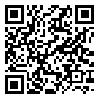BibTeX | RIS | EndNote | Medlars | ProCite | Reference Manager | RefWorks
Send citation to:
URL: http://bcn.iums.ac.ir/article-1-30-en.html

 , Mehrdad Bakhtiary
, Mehrdad Bakhtiary 
 , Mehdi Mehdizadeh
, Mehdi Mehdizadeh 
 , Mohamad Taghi Joghataei
, Mohamad Taghi Joghataei 
 , Samideh Khoei
, Samideh Khoei 
 , Vahid Pirhajati Mahabadi
, Vahid Pirhajati Mahabadi 
 , Asghar Ebrahimi
, Asghar Ebrahimi 

Introduction: This study was designed to investigate the effects of granulocyte colony-stimulating factor (G-CSF) administration in rats for 6 weeks after traumatic brain injury (TBI).
Methods: Adult male Wistar rats (n = 30) were injured with controlled cortical impact device and divided into four groups. The treatment groups (n = 10 each) were injected subcutaneously with recombinant human G-CSF. Vehicle group (n=10) received phosphate buffered saline (PBS) and only Brdu intraperitoneally. Bromodeoxyuridine (BrdU) was used for mitotic labeling. Experimental rats were injected intraperitoneally with BrdU. Rats were killed at 6th week after traumatic brain injury. Neurological functional evaluation of animals was performed before and after injury using neurological severity scores (NSS). Animals were sacrificed 42 days after TBI and brain sections were stained using Brdu immunohistochemistry.
Results: Statistically significant improvement in functional outcome was observed in treatment groups when compared with control (p<0.01). This benefit was visible 7 days after TBI and persisted until 42 days (end of trial). Histological analysis showed that Brdu cell positive was more in the lesion boundary zone at treatment animal group than all injected animals.
Discussion: We believe that G-CSF therapeutic protocol reported here represents an attractive strategy for the development of a clinically significant noninvasive traumatic brain injury therapy.
Received: 2009/07/27 | Accepted: 2016/08/30 | Published: 2016/08/30
| Rights and permissions | |
 |
This work is licensed under a Creative Commons Attribution-NonCommercial 4.0 International License. |



